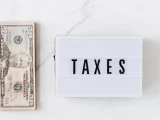
Tax Bracket Analysis for 2023
June 2, 2023Who Qualifies for Tax Brackets?
Tax brackets are the income ranges that determine how much you will pay in taxes.
To qualify for a given tax bracket, a person’s taxable income must fall within the specified range. If the person’s income falls within the lower end of the range, they will be taxed at the lowest possible rate. If their taxable income falls in between two tax brackets, they will be taxed at whichever bracket is higher.
Who is Subject to Different Tax Rates?
The tax system in the United States is a complex beast. This article will break down the different tax rates that apply to different groups of people.
The first group is the single person with no dependents who earns $10,000 per year. This person will be taxed at 10% on their income. They will owe $1,000 in taxes and have a disposable income of $9,000. The next group is a single person with no dependents who earns $25,000 per year. This person will be taxed at 15% on their income and will owe $3,750 in taxes and have a disposable income of $21,250. The last group is a married couple with two children who earn $60,000 per year. They are taxed at 25% on their income and they owe $15,000 in taxes and have a disposable income of $45,000. After the tax is taken out of the $45,000, their disposable income is $35,000.
What are the Different Types of Taxes?
Income Tax: Income tax is a tax on the income of individuals and businesses. It is usually calculated as a percentage of the taxable income.
Inheritance Tax: An inheritance tax is a tax on people who inherit money or property from someone else. It is usually calculated as a percentage of the value of what has been inherited.
Sales Tax: Sales taxes are taxes charged by governments on certain goods and services, such as food, clothes, and cars. They are typically calculated by adding up all the taxes that make up the total cost of an item and dividing it by that item’s price to find out how much each individual tax contributes to the overall cost.
Property Tax: Property taxes are paid to local authorities for services such as street lighting, garbage collection, and public transport. They are usually based on how much value there is in property owned by an individual or company.
Real Estate: Real estate includes all types of property, from land to buildings and other structures. It can also include goods such as cars and furniture.
Retail Price: Retail price is the amount a product or service costs when sold in a shop or market, often the sticker price. For example, if a t-shirt costs $10 in a store, its retail price is $10.
Retirement Income: Retirement income is the money an individual receives from retirement, usually in the form of payments from pensions or savings accounts. It can also refer to all sources of income that help fund a person’s retirement.


